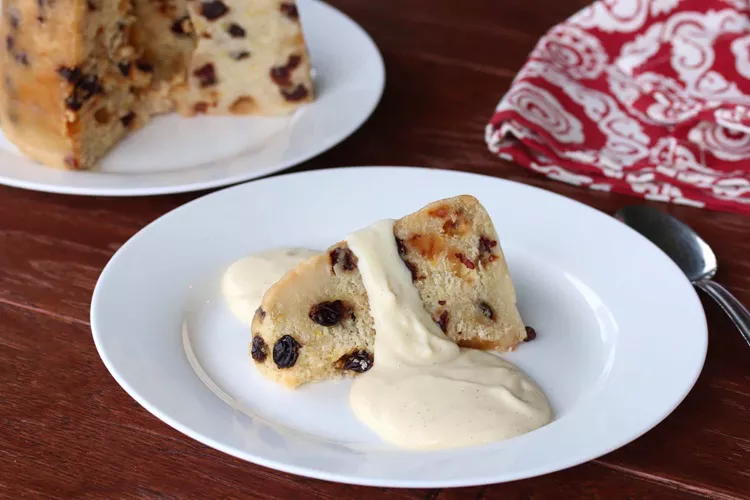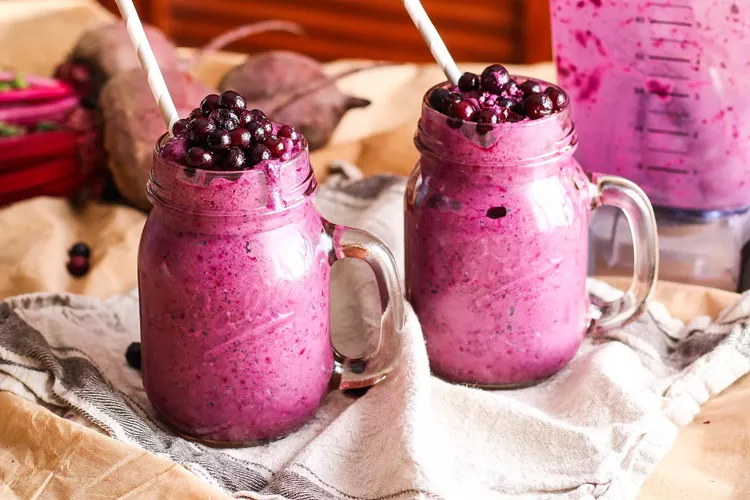British custard, an iconic and beloved dessert component, has graced countless tables and added richness to many traditional British desserts. This creamy, velvety concoction is an essential element of classic British puddings and pastries, and it’s celebrated for its sweet, comforting flavor. In this professional article, we’ll delve into the wonderful world of British custard, exploring its history, ingredients, variations, and how it has evolved to become an integral part of British culinary culture.
The Origins of British Custard
The story of British custard dates back centuries, and its roots are deeply entwined with the development of custards across Europe. The word “custard” itself is derived from the French term “croustade,” which refers to a pastry crust that was initially used to hold the creamy filling. While the custard concept can be traced back to ancient Roman times, it gained significant popularity in England during the medieval period.
British Custard Ingredients
British custard’s simple yet exquisite taste is a result of its carefully selected ingredients. The primary components of traditional British custard include eggs, milk, sugar, and vanilla. Eggs provide the custard’s luscious texture and thickness, while milk contributes to its creamy and liquid base. Sugar adds the essential sweetness, and vanilla extract or flavoring infuses a delightful aroma and taste. It’s the harmonious combination of these ingredients that results in the unmistakable flavor and consistency of British custard.
The Role of Eggs in British Custard
Eggs are the heart and soul of British custard. The egg yolks contain proteins and fats that give the custard its creamy texture. The proteins in the eggs denature and coagulate when heated, creating the custard’s signature thickness. However, it’s crucial to temper the eggs carefully during the cooking process to prevent curdling and achieve the perfect, smooth custard consistency. In addition to texture, eggs also contribute to the custard’s rich, golden color, making it not only a treat for the taste buds but also for the eyes.
The Creaminess of Milk
Milk serves as the liquid base of British custard. The choice of milk can vary, with some custard recipes calling for whole milk, while others use a combination of milk and cream for an even richer texture. The milk’s role is to dilute the custard, providing a smoother and more pourable consistency. It also contributes to the custard’s dairy flavor, which is enhanced by the addition of sugar and vanilla.
Sweetening with Sugar
Sugar is a key ingredient in British custard, adding sweetness to balance the rich flavors of eggs and milk. The amount of sugar used can be adjusted to suit individual preferences, with some opting for a more subtly sweet custard and others desiring a sweeter version. The sugar also aids in caramelization, which is why British custard often has a beautiful golden hue. Additionally, sugar contributes to the custard’s smooth, melt-in-the-mouth texture.
Infusing Flavor with Vanilla
Vanilla is the flavoring agent that gives British custard its distinctive aroma and taste. While some recipes call for whole vanilla beans, more commonly, vanilla extract is used. The fragrant essence of vanilla complements the sweetness of the custard and adds a subtle depth of flavor. Whether it’s a classic vanilla custard or a variant with a hint of nutmeg or cinnamon, vanilla remains a central player in defining the essence of British custard.
The Making of British Custard
Creating the perfect British custard requires precision and patience. The process begins by heating milk (and cream, if used) until it’s hot but not boiling. In a separate bowl, egg yolks and sugar are whisked together until the mixture is pale and slightly thickened. The hot milk is then gradually incorporated into the egg and sugar mixture, a step known as tempering. This prevents the eggs from curdling when exposed to the high temperature of the milk.
The Importance of Temperance
The art of tempering is fundamental in the custard-making process. To achieve the perfect British custard, it’s crucial to add the hot milk to the egg mixture slowly and continuously whisk to maintain a uniform texture. This gradual combination of ingredients ensures that the eggs do not scramble or form unwanted lumps, resulting in a silky-smooth custard.
Gentle Cooking for Optimal Custard Consistency
After tempering, the custard mixture is poured back into the saucepan and heated gently. The custard should be cooked over low to medium heat, with constant stirring. The goal is to cook the custard to a temperature where it thickens, usually between 170°F to 180°F (77°C to 82°C), without boiling. Overcooking can lead to curdling or a grainy texture, so vigilance is key.
Straining for Perfection
To achieve the velvety smoothness characteristic of British custard, it’s common to strain the custard mixture through a fine-mesh sieve. This step removes any potential bits of cooked egg that may have formed during the cooking process. The result is a custard that’s exceptionally silky and free from any unwanted imperfections.
Serving and Enjoying British Custard
British custard is incredibly versatile and can be enjoyed in various ways. It is often served warm as a comforting sauce or poured over traditional British desserts like apple crumble, bread and butter pudding, or spotted dick. However, it can also be chilled and served as a cold custard, making it a delightful accompaniment to fruit salads, pies, and tarts. Some even enjoy it on its own, savoring its creamy texture and rich flavor.
Variations of British Custard
While the classic vanilla custard is the most well-known, there are various delightful variations of British custard. Here are a few notable examples:
1. Bird’s Custard: Bird’s Custard, a popular brand in the UK, is known for its iconic custard powder. This instant custard can be prepared by mixing the powder with hot milk, offering a convenient and quick way to enjoy British custard.
2. Chocolate Custard: For a decadent twist, cocoa or chocolate is added to the custard mixture, creating a luscious chocolate custard. It’s perfect for chocolate lovers and can be served as a dessert on its own or as a topping for cakes and puddings.
3. Alcoholic Custard: Adding a touch of alcohol, such as brandy or sherry, infuses the custard with a unique flavor profile. It’s a sophisticated variation often featured in holiday desserts and celebrations.
4. Nutmeg or Cinnamon Custard: Incorporating warming spices like nutmeg or cinnamon into the custard mixture offers a comforting and aromatic twist. These custards are especially popular during the festive season.
5. Fruit-Infused Custard: To enhance the custard with natural fruit flavors, fruits like raspberries, strawberries, or passion fruit can be pureed and mixed into the custard base. This fruity custard pairs beautifully with a range of desserts.
The Enduring Popularity of British Custard
British custard’s timeless appeal lies in its versatility, comforting taste, and cultural significance. It has firmly established itself as an essential component of numerous classic British desserts, adding a touch of sweetness and luxury to every serving. While British cuisine continues to evolve, custard remains a beloved and cherished element, connecting generations through the shared joy of savoring its creamy goodness.
Conclusion
British custard is more than just a dessert—it’s a testament to the rich culinary heritage of the United Kingdom. Its history, ingredients, preparation, and variations all contribute to its enduring popularity.























